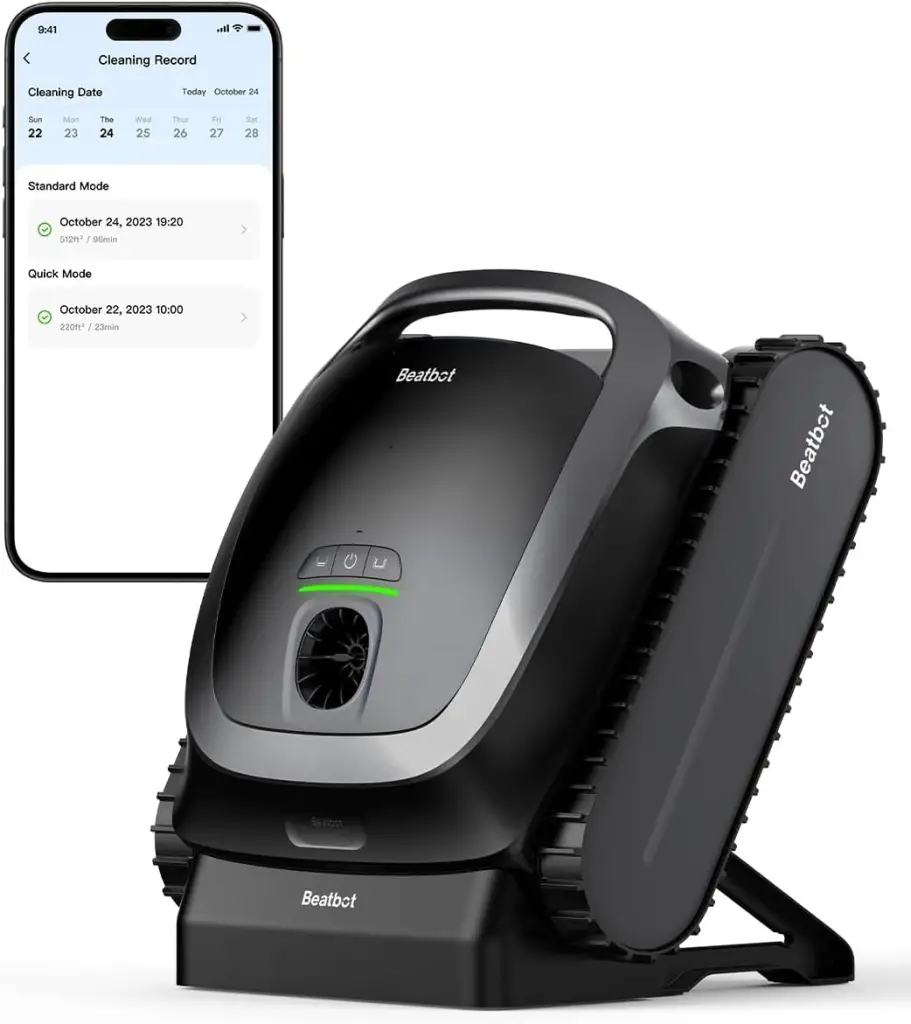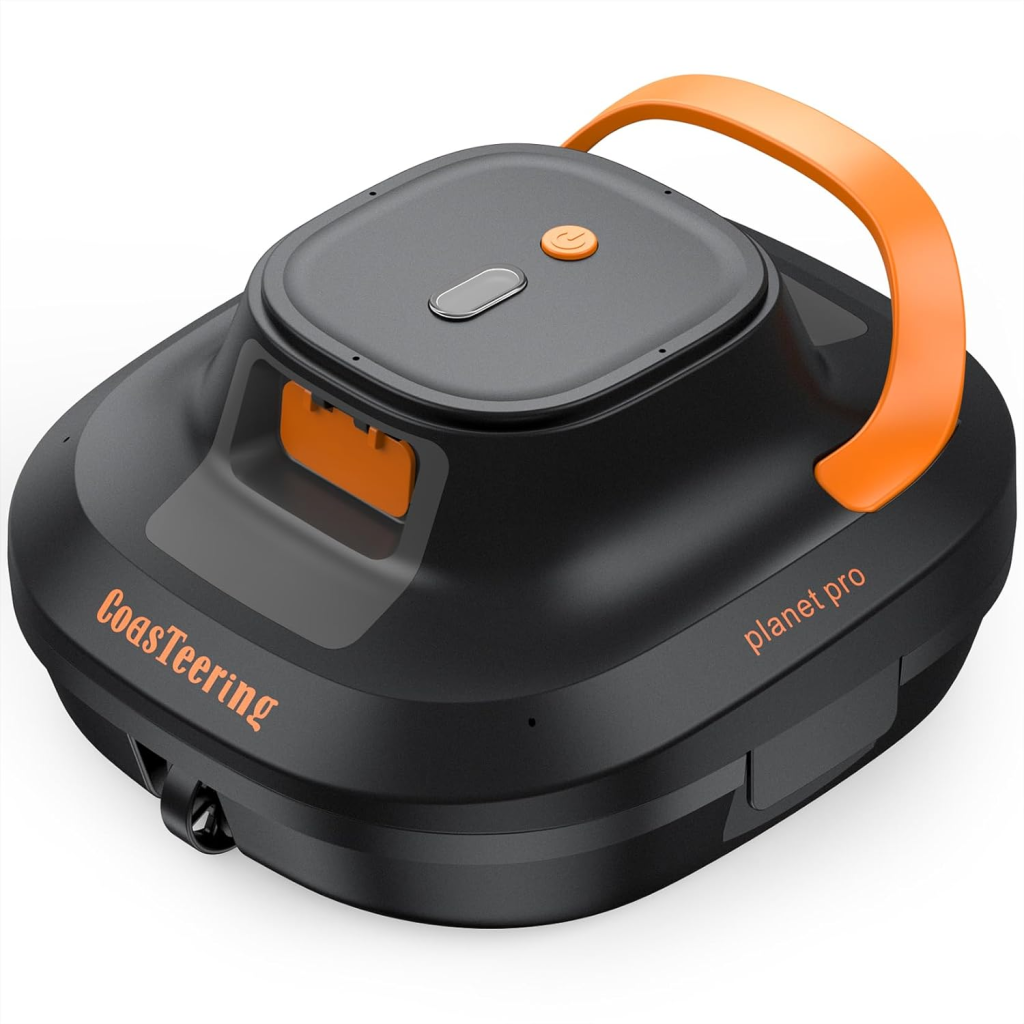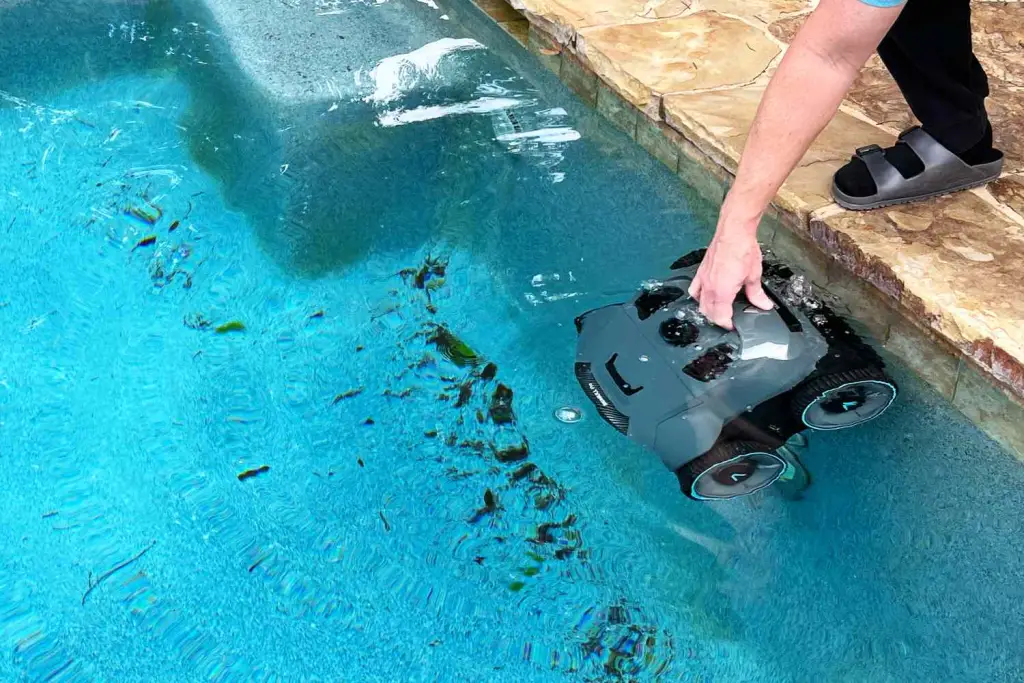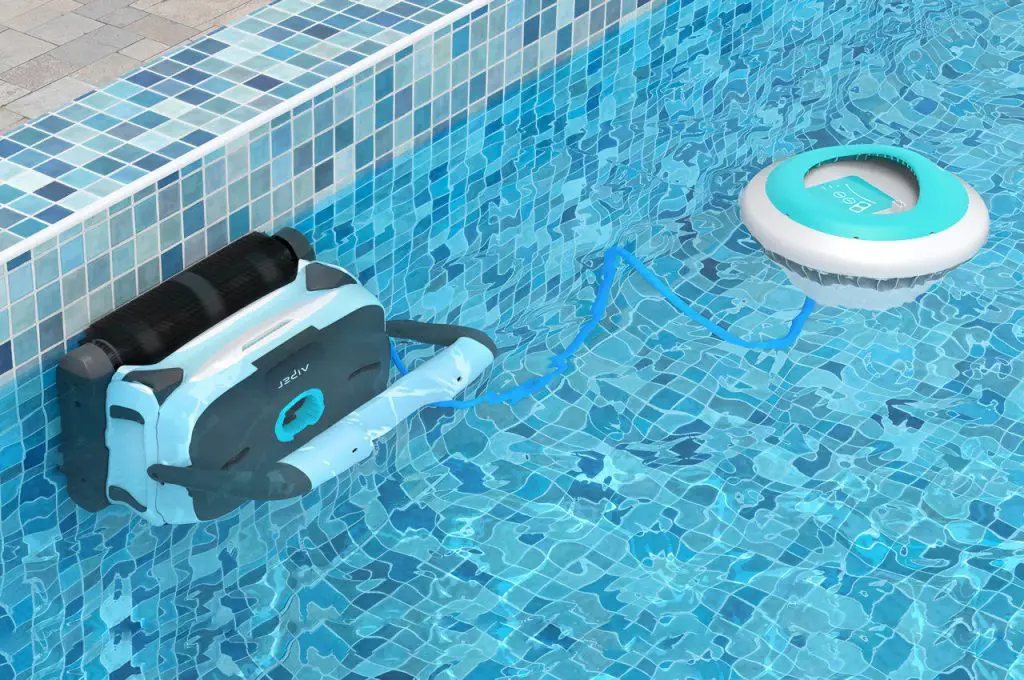Tired of spending hours manually cleaning your pool, only to have it get dirty again in a matter of days? If so, it might be time to consider investing in a robotic pool cleaner. These high-tech devices have revolutionized pool maintenance, making it easier than ever to keep your pool sparkling clean with minimal effort.
But how exactly do these robotic wonders work their magic? In this post, we’ll dive deep into the inner workings of robotic pool cleaners, exploring the key components and technologies that allow them to navigate your pool and remove dirt, debris, and algae with impressive efficiency.
Also read: How to Keep Your Pool Cool Even in the Summer
The Anatomy of a Robotic Pool Cleaner
To understand how robotic pool cleaners work, it’s helpful to first familiarize yourself with their basic structure and components. While specific features may vary between models and brands, most robotic cleaners share the following key parts:
- Motor and pump: The heart of the robotic cleaner is its electric motor, which powers the device and drives the pump to create suction. This allows the cleaner to collect debris as it moves through the water.
- Brushes: Robotic cleaners are equipped with one or more brushes that rotate to scrub the pool surfaces, dislodging dirt, algae, and stuck-on contaminants. Some models feature specialized brushes for different types of surfaces, such as soft bristles for gentle cleaning of vinyl liners.
- Filters: As the cleaner sucks up water and debris, it passes through an internal filtration system to trap the particles and prevent them from re-entering the pool. Most robotic cleaners use either disposable filter bags or reusable cartridges that can be easily removed and cleaned.
- Drive system: To propel itself through the water, a robotic cleaner relies on a drive system typically consisting of wheels, tracks, or a combination of both. This allows the unit to maneuver across the pool floor, climb walls, and navigate obstacles.
- Sensors and navigation: Advanced robotic cleaners are outfitted with various sensors that help them map out the pool’s shape, detect walls and water levels, and avoid getting stuck. Some high-end models even use AI algorithms to determine the most efficient cleaning path.
- Power supply: Unlike suction-side or pressure-side cleaners that rely on the pool’s pump, robotic cleaners are powered independently via a long electrical cable connected to a power supply unit. This low-voltage transformer converts standard household current into a safe, waterproof supply for the cleaner.
How Does a Robotic Pool Cleaner Work? – The Cleaning Cycle: Step by Step

So how does a robotic pool cleaner work? Let’s walk through how these devices actually clean your pool from start to finish. Here’s a step-by-step breakdown of a typical cleaning cycle:
- Placement: To begin, you’ll need to place the robotic cleaner into your pool. Most models are designed to be dropped in at the shallow end, but be sure to consult your owner’s manual for specific instructions.
- Scanning and mapping: Once submerged, the cleaner will use its sensors to scan the pool and create a digital map of the dimensions, depth, and any obstacles. This allows it to chart an efficient cleaning path and avoid getting stuck.
- Navigation: With the pool mapped out, the cleaner will begin to navigate the space in a systematic pattern, ensuring thorough coverage of the floor, walls, and waterline. Most models use a combination of pre-programmed algorithms and real-time sensor data to optimize their movement.
- Brushing and scrubbing: As the cleaner moves along the pool surfaces, its rotating brushes get to work loosening dirt, algae, and biofilm. The brushing action helps to lift debris off the floor and walls, making it easier for the cleaner to suction it up.
- Vacuuming and filtration: Simultaneously, the cleaner’s pump generates suction to pull in water and debris through the intake ports. The contaminated water passes through the internal filtration system, trapping dirt, leaves, and even fine particles like sand and silt in the filters. The clean water is then expelled back into the pool.
- Climbing and waterline cleaning: Most robotic cleaners are designed to scale the pool walls, using their brushes and suction to remove grime at the waterline. Some advanced models can even clean the upper portion of the walls that sit above the water level.
- Completion and retrieval: After the cleaner has completed its programmed cycle (typically 1-3 hours), it will automatically shut off and either park itself at the bottom of the pool or float to the surface for easy retrieval. You can then remove the cleaner from the pool, detach the filters, and empty out the captured debris.
This entire process is fully automated, meaning you can essentially “set it and forget it” while the robotic cleaner does all the hard work for you. Depending on your pool’s size and condition, you may need to run the cleaner daily or a few times per week to maintain optimal cleanliness.
Advanced Features and Technologies of Robotic Pool Cleaners

In addition to the core components and cleaning functions, many modern robotic pool cleaners come equipped with advanced features and technologies that enhance their performance, convenience, and user experience. Here are a few notable examples:
- Remote control and mobile apps: Some high-end cleaners like the Polaris VRX iQ+ Robotic Pool Cleaner include a handheld remote control that allows you to manually steer the unit or spot-clean specific areas of the pool. Others can be controlled via a smartphone app, enabling you to start, stop, and schedule cleaning cycles from anywhere.
- Programmable timers: Many robotic cleaners feature built-in timers that let you set automatic cleaning schedules, such as every 48 or 72 hours (the Aiper Seagull Pro is a great example). This ensures your pool stays consistently clean without you having to remember to turn on the device each time.
- Multiple cleaning modes: Depending on your pool’s needs, you may want to adjust the cleaner’s settings for a quicker or more thorough clean. Some models like the Dolphin 99996403-PC offer selectable cleaning modes, such as a fast mode for light maintenance or an intensive mode for deep cleaning.
- Swivel cables: To prevent the power cord from getting tangled as the cleaner moves around the pool, many units feature a swivel mechanism that allows the cable to rotate freely without kinking or coiling. This helps to ensure smooth, uninterrupted operation.
- Dual filtration: While most robotic cleaners use a single filtration basket or bag, some advanced models incorporate a dual filtration system with both coarse and fine filters. This allows the cleaner to capture a wider range of debris sizes, from large leaves to microscopic algae spores.
- Intelligent navigation: As mentioned earlier, high-end robotic cleaners often use advanced algorithms and sensors to map out the pool and determine the most efficient cleaning path. Some even have the ability to learn and adapt to your pool’s unique shape and features over time.
- Remote monitoring: Select premium models offer remote monitoring capabilities through a mobile app, allowing you to keep tabs on the cleaner’s progress, receive maintenance alerts, and even view real-time performance metrics like the amount of debris collected.
While these advanced features can certainly add to the cost of a robotic pool cleaner, they also provide significant convenience, performance, and peace of mind for pool owners who want the ultimate in automated maintenance.
Benefits of Robotic Pool Cleaners

Knowing that robotic pool cleaners aren’t cheap, so why should you consider investing in a robotic pool cleaner over traditional manual cleaning or other automatic options like suction-side or pressure-side cleaners? Here are some of the key benefits that robotic cleaners offer:
- Time and labor savings: Perhaps the most obvious advantage of robotic cleaners is that they eliminate the need for manual brushing, vacuuming, and skimming. Simply drop the unit in the pool and let it do the work for you, freeing up your time and energy for more enjoyable activities.
- Thorough and efficient cleaning: With their advanced navigation systems, powerful suction, and rotating brushes, robotic cleaners are able to achieve a level of cleaning performance that’s difficult to match with manual methods. They can scrub away tough stains, remove fine debris, and even climb walls for a complete pool cleaning.
- Independent operation: Unlike suction-side or pressure-side cleaners that rely on your pool’s pump and filtration system, robotic cleaners operate independently with their own motor, pump, and filters. This means they won’t put any additional strain on your pool equipment or affect the circulation of chemically treated water.
- Energy efficiency: Because robotic cleaners run on low-voltage electricity and have their own efficient motors, they typically consume far less energy than traditional pool pumps. This can translate to significant savings on your monthly utility bills, especially if you run the cleaner frequently.
- Chemical savings: By removing dirt and debris more effectively, robotic cleaners help to keep your pool water cleaner and clearer for longer periods. This can reduce the amount of chemicals needed to maintain proper sanitization and balance, saving you money on supplies.
- Improved water quality: With their fine filtration capabilities, robotic cleaners are able to remove even microscopic contaminants like algae spores, bacteria, and organic matter that can degrade water quality over time. This leads to a healthier, more inviting pool environment for you and your family.
- Extended pool life: Regular use of a robotic cleaner helps to prevent the buildup of dirt, grime, and calcium deposits on your pool surfaces, which can cause staining, etching, and other damage over time. By keeping your pool consistently clean, you can extend the life of your pool liner, tiles, and other components.
While robotic pool cleaners do require a higher upfront investment compared to manual cleaning tools or suction/pressure-side cleaners, their long-term benefits in terms of time savings, energy efficiency, and improved pool health can make them a worthwhile choice for many pool owners.
Maintenance and Troubleshooting of Robotic Pool Cleaners

To keep your robotic pool cleaner running smoothly and effectively, it’s important to perform regular maintenance and know how to troubleshoot common issues. Here are some tips to help you care for your cleaner and resolve problems that may arise:
- Clean the filters: Depending on your pool’s debris load, you’ll need to empty and clean the cleaner’s filter baskets or bags after each use or at least once a week. Rinse them thoroughly with a hose or in a sink, and replace them if they become worn or damaged.
- Check the brushes: Inspect the cleaner’s brushes periodically for signs of wear, fraying, or loss of bristles. Worn-out brushes can reduce the cleaner’s scrubbing performance and may need to be replaced.
- Untangle the cable: If you notice the power cable becoming kinked or coiled, unplug the cleaner and carefully straighten it out. Make sure the swivel mechanism (if equipped) is rotating freely and not blocked by debris.
- Store properly: When not in use, store your robotic cleaner in a cool, dry place out of direct sunlight. Avoid leaving it in the pool for extended periods, as this can cause premature wear on the components.
- Troubleshoot error codes: If your cleaner displays an error code or warning light, consult your owner’s manual for specific troubleshooting steps. Common issues include clogged filters, obstructed impellers, or problems with the drive system.
- Check for leaks: If you notice water dripping from the cleaner’s body or the power supply, there may be a leak in the seals or gaskets. Contact the manufacturer or a professional repair service for assistance.
- Maintain proper chemistry: To prevent damage to your cleaner’s components, make sure to maintain proper pool water chemistry, especially pH and chlorine levels. Avoid running the cleaner immediately after adding chemicals to the pool.
Conclusion
Robotic pool cleaners are a marvel of modern technology, combining advanced sensors, powerful motors, and intelligent navigation to make pool maintenance easier and more effective than ever before.
While the initial cost of a robotic cleaner may be higher than traditional cleaning methods, the long-term savings in time, energy, and chemical expenses can make it a worthwhile investment for many pool owners. Plus, the convenience of automated cleaning and the satisfaction of a consistently sparkling pool are hard to put a price on.
If you do decide to purchase a robotic pool cleaner, be sure to choose a reputable brand and model that fits your pool’s specific needs and features. With proper use and maintenance, your robotic cleaner can become an indispensable tool in your pool care arsenal, keeping your water clean, healthy, and inviting for years to come.






